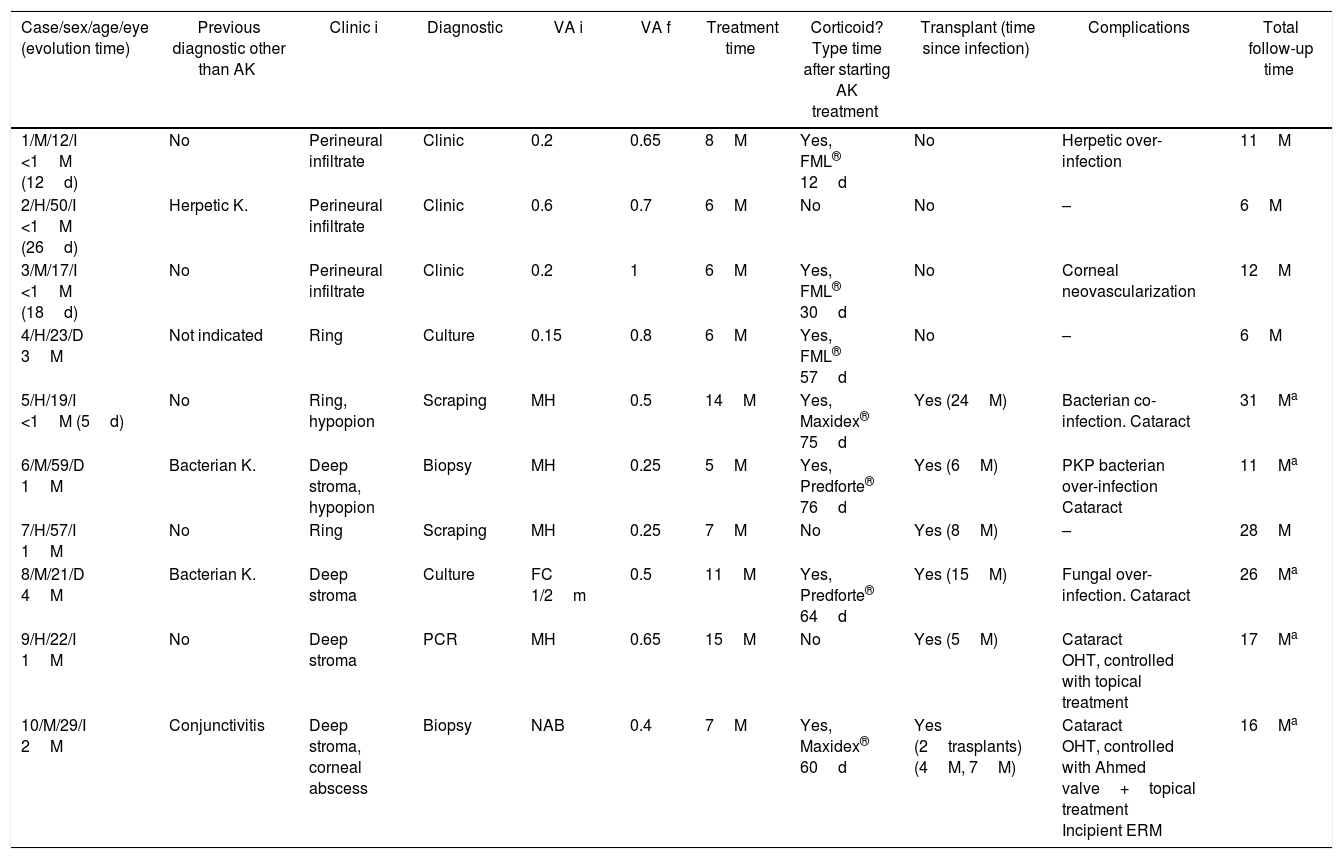Cases are presented of 10 patients with Acanthamoeba keratitis treated between 2008 and 2017. All were contact lens wearers. All of them received treatment with a biguanide combined with a diamidine. In 3 cases the infestation did not exceed the superficial stroma, responding to topical treatment. In 7, the infection reached the deep stroma, with 6 of these cases requiring penetrating keratoplasty (PKP), 3 of them therapeutic PKP because of perforation risk or ocular spreading. The visual acuity improved in all the cases.
ConclusionThe infestation depth at the time of diagnosis appears to be the main risk factor for requiring a PKP.
Presentamos 10 casos de queratitis por Acanthamoeba tratados en nuestro hospital entre 2008 y 2017. Todos eran portadores de lentes de contacto. Como tratamiento todos recibieron una biguanida junto a una diamidina. En 3 casos la infección no superaba el estroma superficial, respondiendo al tratamiento tópico. En 7 alcanzaba el estroma profundo, precisando 6 de ellos una queratoplastia penetrante, 3 «en caliente» por riesgo de perforación o extensión ocular. La agudeza visual mejoró en todos los casos.
ConclusiónLa profundidad de la infección al diagnóstico aparece como el principal factor de riesgo para necesitar una queratoplastia penetrante.









